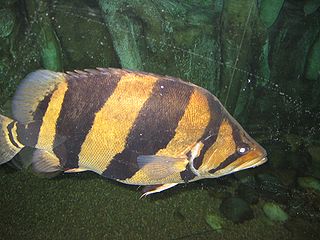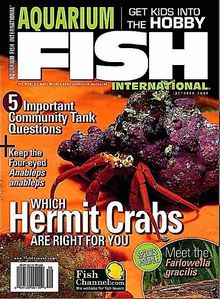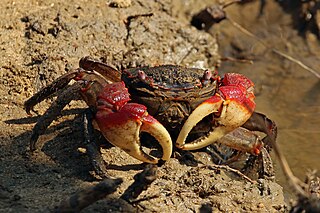Related Research Articles

Brackish water, sometimes termed brack water, is water occurring in a natural environment that has more salinity than freshwater, but not as much as seawater. It may result from mixing seawater and fresh water together, as in estuaries, or it may occur in brackish fossil aquifers. The word comes from the Middle Dutch root brak. Certain human activities can produce brackish water, in particular civil engineering projects such as dikes and the flooding of coastal marshland to produce brackish water pools for freshwater prawn farming. Brackish water is also the primary waste product of the salinity gradient power process. Because brackish water is hostile to the growth of most terrestrial plant species, without appropriate management it is damaging to the environment.

Aquatic plants are plants that have adapted to living in aquatic environments. They are also referred to as hydrophytes or macrophytes to distinguish them from algae and other microphytes. A macrophyte is a plant that grows in or near water and is either emergent, submergent, or floating. In lakes and rivers macrophytes provide cover for fish, substrate for aquatic invertebrates, produce oxygen, and act as food for some fish and wildlife.

Vallisneria is a genus of freshwater aquatic plant, commonly called eelgrass, tape grass or vallis. The genus is widely distributed in tropical and subtropical regions of Asia, Africa, Europe, and North America.

Avicennia marina, commonly known as grey mangrove or white mangrove, is a species of mangrove tree classified in the plant family Acanthaceae. As with other mangroves, it occurs in the intertidal zones of estuarine areas.

Fishkeeping is a popular hobby, practiced by aquarists, concerned with keeping fish in a home aquarium or garden pond. There is also a piscicultural fishkeeping industry, serving as a branch of agriculture.

The Godavari-Krishna mangroves are a mangrove ecoregion of India's eastern coast.

A brackish-water aquarium is an aquarium where the water is brackish (semi-salty). The range of "saltiness" varies greatly, from near freshwater to near marine and is often referred to as specific gravity (SG) or salinity. Brackish water aquaria is a popular specialization within the fishkeeping hobby. Many species of fish traded as freshwater species are actually true brackish species, for example mollies, Florida flagfish, and some cichlids such as chromides and black-chin tilapia. There are also several popular species traded purely as brackish water fish, including monos spp, scats, archerfish, and various species of pufferfish, goby, flatfish, and gar. Generally, aquarists need to maintain a specific gravity of around 1.005 to 1.010 depending on the species being kept, but practically all brackish water fish tolerate variations in salinity well, and some aquarists maintain that regularly fluctuating the salinity in the aquarium actually keeps the fish healthy and free of parasites.

The Barker Inlet is a tidal inlet of the Gulf St Vincent in Adelaide, South Australia, named after Captain Collet Barker who first sighted it in 1831. It contains one of the southernmost mangrove forests in the world, a dolphin sanctuary, seagrass meadows and is an important fish and shellfish breeding ground. The inlet separates Torrens Island and Garden Island from the mainland to the east, and is characterised by a network of tidal creeks, artificially deepened channels, and wide mudflats. The extensive belt of mangroves are bordered by samphire saltmarsh flats and low-lying sand dunes.

The Mangrove forests of Qeshm or Hara forests of Qeshm, are the mangrove forests on the southern coast of Iran, particularly on and near the island of Qeshm in the Persian Gulf. Dominated by the species Avicennia marina, known locally as the "hara" or "harra" tree, the forests represent an important ecological resource. The "Hara Protected Area" on Quesm and the nearby mainland is a biosphere reserve where commercial use is restricted to fishing, tourist boat trips, and limited mangrove cutting for animal feed.
Lottia alveus, the eelgrass limpet or bowl limpet, was a species of sea snail or small limpet, a marine gastropod mollusk in the family Lottiidae, the Lottia limpets, a genus of true limpets. This species lived in the western Atlantic Ocean.

Aquarium Fish International (AFI) was a North American monthly magazine, published by BowTie Inc. of Irvine, California, and dedicated to freshwater and saltwater fishkeeping and the aquarium/fishkeeping hobby in general.

Lists of aquarium life include lists of fish, amphibians, invertebrates and plants in freshwater, brackish and marine aquariums. In fishkeeping, suitable species of aquarium fish, plants and other organisms vary with the size, water chemistry and temperature of the aquarium. The lists include:

The New Guinea mangroves is a mangrove ecoregion that covers extensive areas of the coastline New Guinea, the large island in the western Pacific Ocean north of Australia.

An aquarium is a vivarium of any size having at least one transparent side in which aquatic plants or animals are kept and displayed. Fishkeepers use aquaria to keep fish, invertebrates, amphibians, aquatic reptiles, such as turtles, and aquatic plants. The term aquarium, coined by English naturalist Philip Henry Gosse, combines the Latin root aqua, meaning 'water', with the suffix -arium, meaning 'a place for relating to'.

Avicennia alba is a species of tropical mangrove in the family Acanthaceae. It is found growing in coastal and estuarine locations in India, Southeast Asia, Australia, and Oceania.

The Southern Africa mangroves are mangrove ecoregion on the Mozambique's southernmost coast and the eastern coast of South Africa.

Zostera marina is a flowering vascular plant species as one of many kinds of seagrass, with this species known primarily by the English name of eelgrass with seawrack much less used, and refers to the plant after breaking loose from the submerged wetland soil, and drifting free with ocean current and waves to a coast seashore. It is a saline soft-sediment submerged plant native to marine environments on the coastlines of northern latitudes from subtropical to subpolar regions of North America and Eurasia.

Zostera noltii is a species of seagrass known by the common name dwarf eelgrass. It is found in shallow coastal waters in north western Europe, the Mediterranean Sea, Black Sea, Caspian Sea and Aral Sea and on islands in the Atlantic off the coast of northwest Africa. It is an important part of the intertidal and shallow subtidal ecosystems of estuaries, bays and lagoons.
References
- ↑ "BracPlants". Archived from the original on 2018-04-14. Retrieved 2018-04-14.